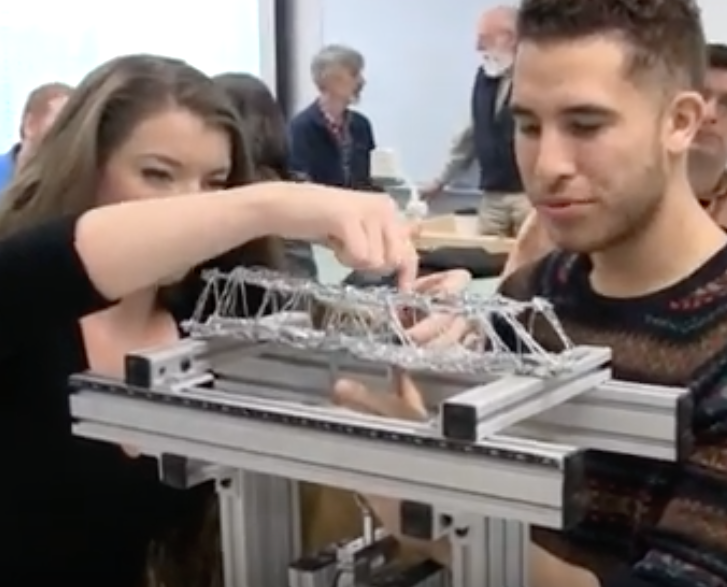Vernier Structures and Materials Tester: An Engineering Marvel To Test Student's Engineering Marvels
By Martin Horejsi
Posted on 2019-02-18
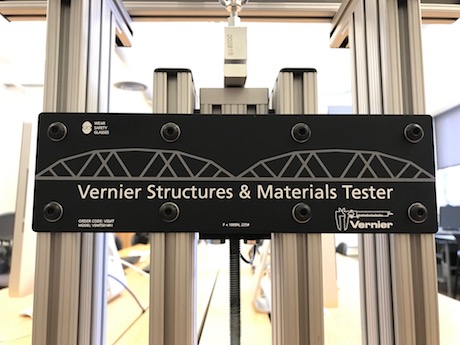
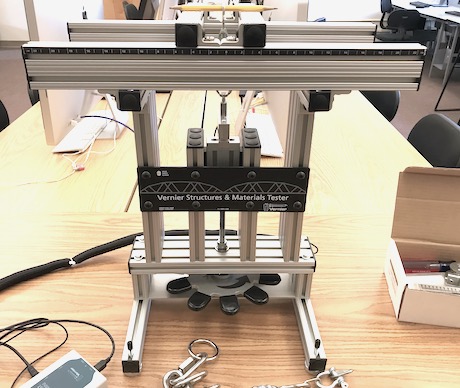
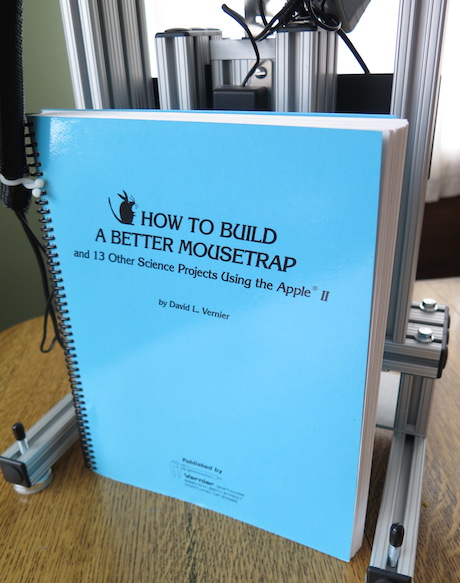
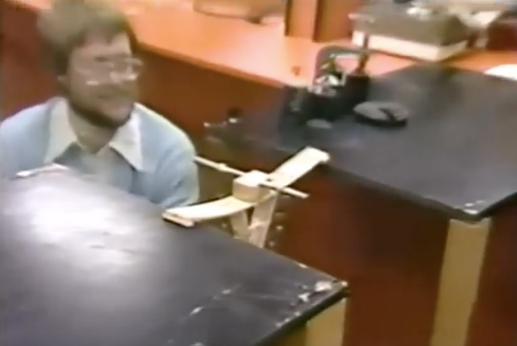
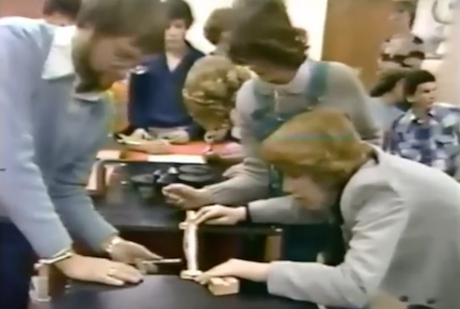

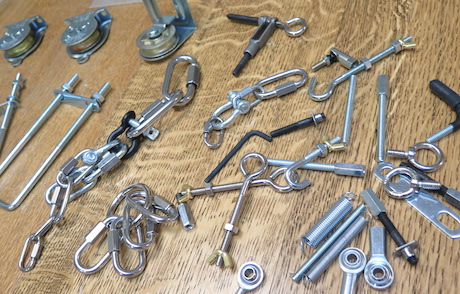
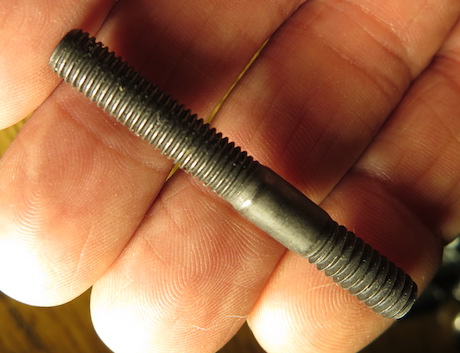
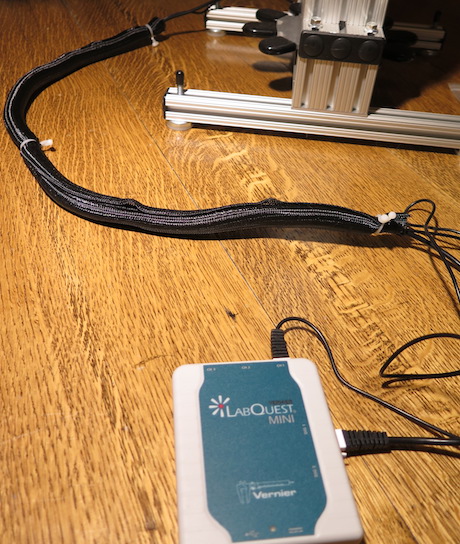
The VSMT Displacement Sensor uses a quadrature optical (incremental type) encoder to measure the amount and direction of rotation. The encoder, which is attached to the threaded rod that causes the force sensor to move up or down, consists of a coded pattern of opaque and transparent sectors. The quadrature encoder produces two pulse output patterns 90o apart in phase. The movement of the threaded rod is determined by counting the pulses. The phase relationship between the output signals determines the direction of rotation. The encoder counts a pulse every 22.50 or 16 pulses per revolution of the wheel.
The VSMT uses this count to determine the revolutions of the wheel (or fractions, thereof). The VSMT Displacement Sensor and the VSMT Force Sensor are linked by a threaded rod with a pitch of 16 (16 threads per inch). For each counter clockwise revolution the Force Sensor moves down 1/16 of an inch.
Ahh, inches. Inches are so hard to let go of. I know that. I grew up in inches. My education was in inches. I used inches in science, in sport, in poetry. But we really have to let inches go. The rest of the world revolves quite well with metrics. Yes, I get that the centimeter is an ugly unit for poetry. its clumsy in sport, and impersonal in song. Maybe we could move the fractional measurement system to another field where it is used with historic appreciation and activity-specific vernacular?. But again, I digress. Let’s breaks some stuff, shall we?
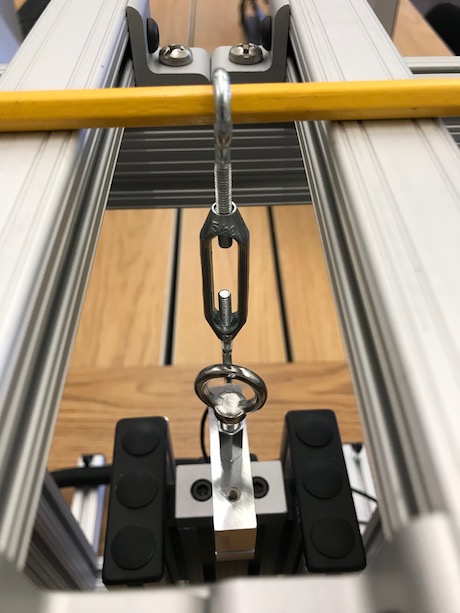
Before attacking structures that have some serious student engineering and time invested, learning the VSMT system and its predictable operation requires some practice. Pencils anyone?
As every teacher knows, the quality of the classic yellow pencil is only skin deep. Some pencils are wood, some are not. Some are stronger than others. Some bend, some melt, and some are a pleasure to write with. For this inspection, a handful of various brands of yellow pencils were in fact injured in the name of science. After standardizing the conditions of the test, namely the width of the support platform and the hardware connecting the pencil to to the sensors. With that in place, it was pencil breaking time.
Here is the data from a lot of broken pencils.
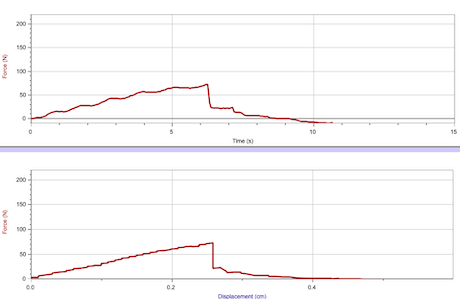
No-name pencil given away as promotion.
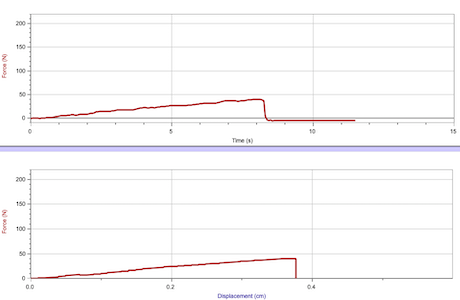
Sanford EarthWrite Pencil
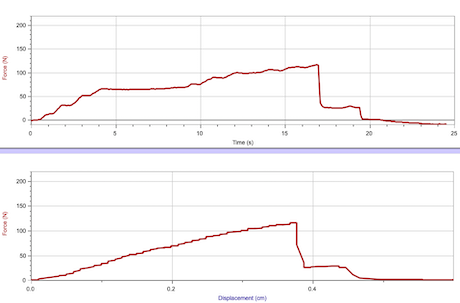
Dixon #2 Pencil
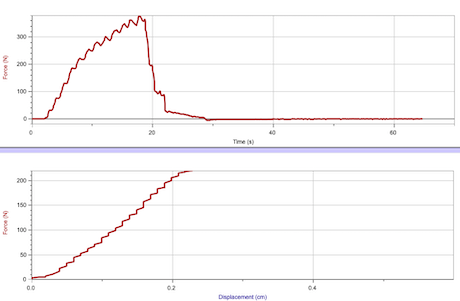
Craftsman carpentry pencil (oversized)
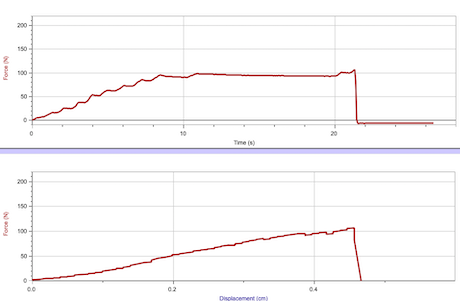
Charles Leonard #2 pencil
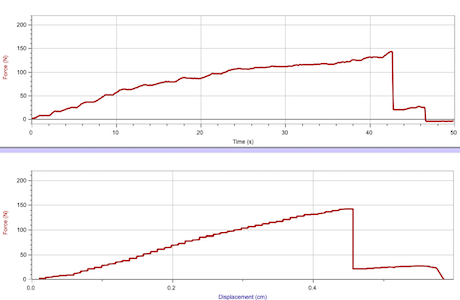
Bazic #2 pencil
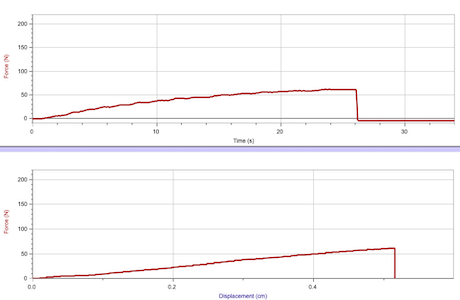
Americas Gold #2 pencil
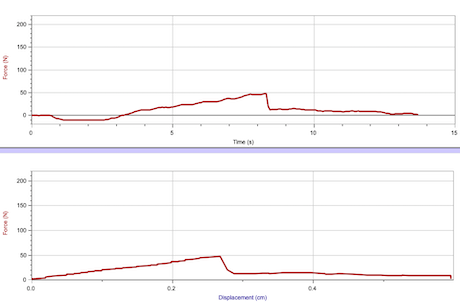
Americas Gold pencil-Chewed on weakening it
A River Runs Through It
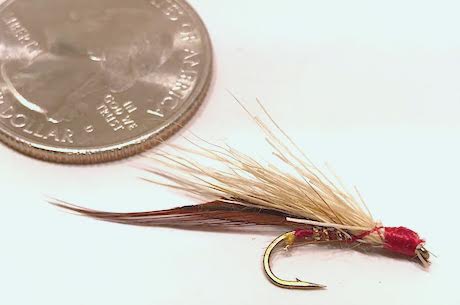
The first ever “Hellgate Knight” dry fly. Tied by a junior at Hellgate High School. Yes, that is the actual name of the school and the school’s colors are red and gold.
Another tangential use of the Vernier Structures & Materials Tester is of hometown interest given that the River really does run through it. Fly fishing is popular activity, and strength the knots and flies is a large part of understanding the interaction of the art of fishing and what is being fished for, So testing the knots, line and flies would be both fun and topical. Two high school students chose some popular knots and weights of line to test. But the tricky part was building the harness that would allow proper testing given the variables of holding onto filament line. A bend over a small or sharp corner might introduce a weakness, so a mechanism needed to be assembled to allow the line a clean route from anchor to tester. Another issue was that this was no mere bridge failing through minor deformation, this test was to complete failure and separation. That meant that the anchor apparatus must also be controlled since it would fly free once the line broke. Hardly rocket science, but still some good experimental protocols needed to be defined.
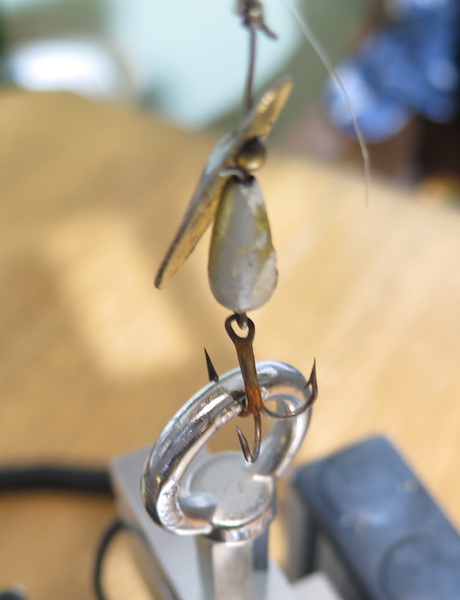
As a proof of concept, a few testing paths were developed and several knots tested. First the Vernier Structures & Materials Tester tackle had to be configured to pull apart fishing tackle. For this initial inspection into line and knot strength, a smooth but strong cylinder was needed on which to wrap fishing line to move the weakness downstream to the lure or fly. If the line was simply tied onto another small piece of hardware, the weakness could just as easily appear at the apparatus attachment as it could the actual point of interest.
Several solutions for the non-knotting connection were explored including a large screwdriver shaft, a large smoother wrench shaft, and finally the one decided upon, a 1/2 inch ratchet extension complete with ratchet for stability. Anchored with some woodworking trigger clamps, the ratchet and extension complements the stainless steel ring attached to the force sensor. Between the two are some fishing line and exactly one knot. The smooth curve of the ratchet extension provides little additional stress on the line while also securing it completely for this test through a series of loops around the chromed steel shaft. A second rubber-jawed trigger clamp was used to hold the line in place on the ratchet extension. I won’t claim to have come up with this idea on my own. Rather it is a smaller version of a design I once read about in an engineering article that explained how climbing ropes were tested.
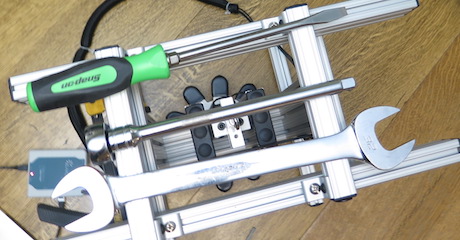
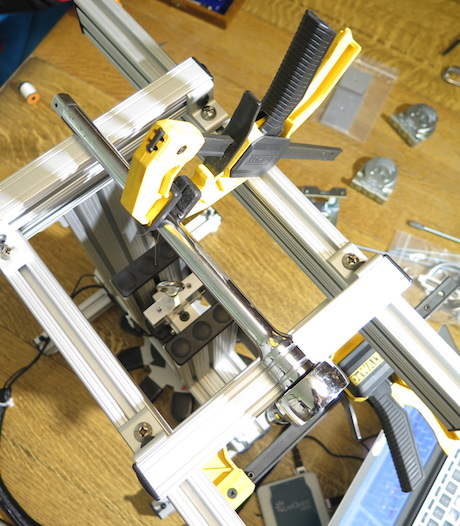
Several variations of knots were tested, with all of them connected to a conventional and popular fishing lure. And that lure in turn simply hooked as defined to the installed stainless steel ring. The results in the best case had the line breaking at about 20N or through a few conversions, a loss of about 20% of the advertised strength of the line from the factory. Again, from what I know about climbing rope testing, a loss of 1/5th of the overall system strength due to a knot is actually pretty good. Some knots can cut the system strength in half, which is actually much better than those knots that come undone. There are some fishing knots that are reported to retain 95% or more of the original line strength with a few sources claiming 100%. But we didn’t come close to that.
I guess it’s a matter of perspective. And for knot perspective, the reef or 4000 year old square knot or reef knot is popular but week and some have suggested that the square knot has unintentionally killed more people than any other knot. Of course the knot that has killed the most people intentionally is the hangman knot. For our cases, we used several different traditional fishing knots including the most common, the Improved Clinch Knot.
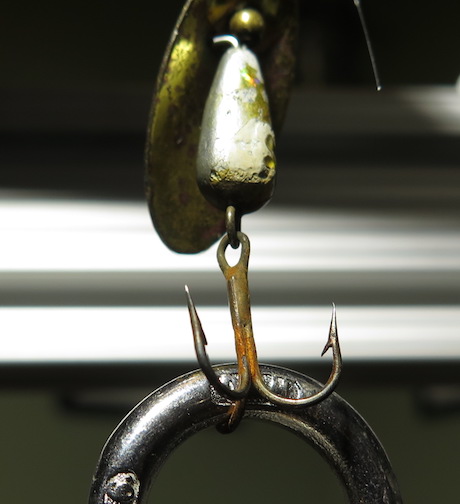
The data collected from using the Vernier Structures & Materials Tester showed that the knots tested were some of the best knots for fishing in terms of strength. One knot slipped, but at the maximum Newton number at breakage did show that any fish worth its salt will push the equipment to it limit making the fish-fisherman fight a true test of skill.
The Clark College Engineering design competition video below should satisfy your appetite for breaking bridges with the Vernier Structures & Materials Tester.
Disclaimer: The views expressed in this blog post are those of the author(s) and do not necessarily reflect the official position of the National Science Teaching Association (NSTA).




